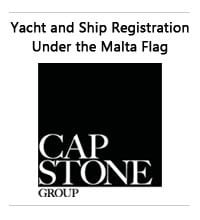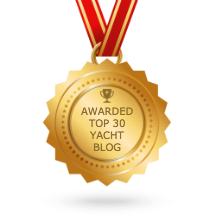December 17, 2021
New Launch: Feadship 71.50m Hull. 819
December 16, 2021
Project: Maritimo M75
December 15, 2021
Improve-it = Fairline F//Line 33
December 14, 2021
Project: Princess V50
December 13, 2021
New Model: Fiart 35 Seawalker
December 12, 2021
Project: Sunseeker 90 Ocean Enclosed
December 11, 2021
New Model: Wally Why200
December 10, 2021
Robert T. Healey 1929 - 2021
Robert T. Healey Sr., the co-founder of the Viking Yacht Company who helped build the company into an industry leader and led the fight that repealed the Federal Luxury Tax on yachts in the early 1990s, passed away nine December at the age of 92. Bob Healey Sr. and his brother Bill established Viking Yachts in 1964, and the company went on to become the largest manufacturer of sport fishing yachts in the world. But that success may have never been achieved without the determination and perseverance of Bob Healey. When a federal 10 percent luxury tax was imposed on yachts in 1991, thousands of people were laid off and hundreds of companies went out of business. Viking nearly went bankrupt, closed a plant in Florida and laid off all but 65 of its 1,500 boatbuilders. Bob was instrumental in organizing a national, grass-roots campaign to fight the tax. He took the industry lead, organizing busloads of out-of-work boatbuilders to converge on Capitol Hill for demonstrations, and setting fire to a boat on a barge in Narragansett Bay as a highly effective symbol of protest. The tax was repealed 20 months later in 1993. With Bill’s help, Bob privately funded the company out of his own savings, allowing Viking to tool up new models. The company came out of the gate running when the tax was finally repealed – and they never looked back. Bob graduated from Camden Catholic High School, attended St. Joseph’s College in Philadelphia, graduating with a B.S. in Political Science, and earned a J.D. from the University of Pennsylvania Law School. He practiced law in Camden County, N.J., for 25 years before retiring as a senior partner in the firm of Healey, Mueller and Tyler to devote himself full time to business interests. In the 1950s, his brother Bill joined Bob in the real-estate development business. Among other projects, the two brothers acquired and developed the Bass River Marina in New Gretna, N.J. In 1964 a small, local builder of wooden boats, Peterson-Viking, was having financial trouble, and the brothers agreed to buy the company, changed the name to Viking Yachts, and relocated the business to their property adjoining the marina. The boatbuilding business soon occupied much of their time, so the brothers sold the marina and concentrated on building yachts. Bob was the company lawyer, moneyman and Chief Executive while his brother built the boats. Committed to their mantra to build a better boat every day, Bill and Bob pushed Viking to the pinnacle of their industry with more than 5,000 boats delivered. They successfully steered the company through the ups and downs of economic cycles. As Viking's Chairman of the Board for 57 years, Bob Healey Sr. diversified their financial interests into multifamily, industrial and commercial real estate, oil and gas exploration and development, and the financial management of the Healey family assets. Together, Bill and Bob Healey achieved many milestones. In 1996, they founded the Recreational Fishing Alliance (RFA), a non-profit organization formed in 1996 to promote sustainable fisheries and a healthy marine environment. Viking has contributed well over $1 million to the RFA. In that same year, the brothers established Viking Sport Cruisers, a company that has been highly successful distributing British-built, high end cruising yachts, built to Viking's specifications, through its dealer network in North America. Bob, Bill and Pat received the Ernst and Young 1998 New Jersey Manufacturing Entrepreneur of the Year Award. Fifteen years later, the family would earn a second award from Ernst and Young. Ironically, the Healeys bought back Bass River Marina in 2002 and reopened it as the Viking Yachting Center. They were inducted in 2003 into the National Marine Manufacturers Association Hall of Fame for their outstanding contributions to the marine industry. In honor of their service and commitment to the marine industry for more than a half a century, Bill and Bob were honored with the 2019 IBI-METSTRADE Boat Builder Lifetime Achievement Award, which was accepted by his son, Bob Jr. Bob received many more awards for his achievements, including induction into the NJ Marine Trade Association Hall of Fame and the Rowan University Milestone Award. Bob also channeled his financial success into philanthropic interests, which included building schools in impoverished areas of Mexico, and providing housing, medical assistance, education, food and clean water to the people of war-torn Sierra Leone through the Healey International Relief Foundation. A devout Catholic and product of Catholic school education, Bob brought his business skills to the challenges facing Catholic schools in the U.S. and formed the Healey Education Foundation and the Catholic Partnership Schools in Camden. With his wife Ellen, Bob founded the Gleneayre Equestrian Program for at-risk youth. The program uses the powerful connection between horses and people to support learning, growth and healing. For his philanthropic efforts, Bob received the Lewis Katz Excellence in Education Award, the Beacon of Light Award, the Catholic Charities Bishop Nicholas DiMarzio Award for Leadership, an Honorary Doctorate Degree from Scranton University and the Shield of Loyola Award from St. Joseph's University. Beloved husband of Ellen J. (nee Baldino), loving father to his seven children: Lizanne H. Jenkins (Thomas), Christine L. Healey, Caroline H. Adillon, L. Toland Sherriff (Robert), Robert T. Healey, Jr. (Bobbi), M. Alexis Iaccarino (Jonathan) and Leigh H. Hughes (Gabriel), and adored grandfather of his sixteen grandchildren. He was predeceased by his first wife, Louise L. (nee Lucas), and his two brothers, Patrick J. Healey and Edward J. Healey. He is survived by his brother William J. Healey, and many nieces and nephews.








.jpg)



















